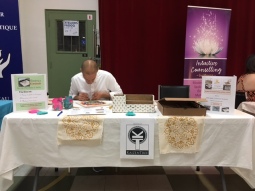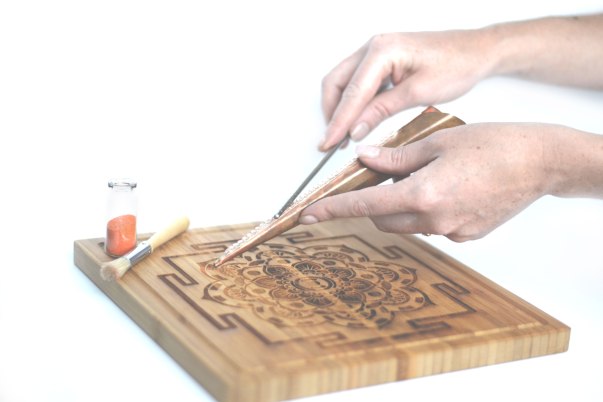I was telling my best friend who is just starting a family how I faced some challenging situations and still managed to be smiling and start new projects. At some point, he asked me -how do you manage at work or in your relationships to not lose it completely? To what I answer – I do lose it and it used to be very frequently. I just kind of gave up, I gave up arguing with my partner, or coworkers, because in the heat of the argument I can have one of the following outcomes:
- Am I able to prove my point to the other person that is agitated? Most likely not.
- If I’m right, who cares? Probably I am damaging something more important which is the relationship itself
The most important thing about surrender to the conflict was not the fact that I stopped wasting time and energy arguing but that I would wait for a better opportunity to respond, keeping the relationship in good stand and well, why not….my own health. I’m not a guru but I learned from losing so many million arguments in my 40 something years.
My friend who facing a work dilemma, and knows how hot headed I used to be, then asked me -Then, how do you do to control the otherwise natural impulse to respond, moreover when you are right or when you notice somebody is just saving face while possibly making you look bad?
I spoke like 5 minutes about how multiple examples, but then we needed to go back to our offices, and I said, in summary what makes me rekindle the relationship with my girlfriend, what have saved me from losing my temper, what have given me best results in personal and professional life is to follow these 3 easy to remember steps:
1 No matter what delay your response.
Most of the time, we feel that we need to have an immediate answer to look good, or that we would lose the argument of something. Learn to take a pause, knowing or not the answer, take a pause, it would make you look better and smarter (think of Obama). It will help you to think and prepare your answer. It will help you to even evaluate if the issue in question deserves an answer. Just always delay your response.
2 Look at yourself as if it was a movie, then think how you’d like to look
Ask yourself: Are you mad? Are you agitated by this issue or by past issues? Do you feel pressured to respond? Is it your ego talking on your behalf? Are you just trying to win the argument? What are the stakes?
Act as your hero in the movie of your own life. Or as I’ve read many times: What advice would you give to your best friend if she/he was in the same situation?
Remember it is always better to be known for being nice and good team player than for being a know it all. Don’t burn bridges. You can take distance and yet be elegant, decisive and kind. Opportunities come easier when your reputation is of openness and team player.
3 Measure the consequences
Sometimes, we are too quick to respond and we don’t give ourselves the chance to evaluate the consequences. Some situations don’t even deserve and answer. Some answers are better given verbally other in written. Most often than not, the results we want are not achieved by winning an argument, and very often we assume others position entering in an unnecessary conflict and making others feel bad. As a project manager, I know that assumptions alone are dangerous, every assumption must be made (if required) putting ourselves in the other person situation, and always accompanied by a risk assessment. For example, would you absolutely need to eat at the place of your choice sacrificing your partners and family experience? I personally rather have a good time, by enjoying and making others enjoy the moment instead of insisting until the other party gets mad. After all who would want to eat if everyone else is angry?
These steps are not going to give you the path of the fame and fortune. They will surely make you flow better in your own path and making your life just simpler and more pleasurable, for you and the ones that surrounds you.
Finally, my friend said -wow how did you change so much? you are so good, it must really help at work.
To which I replied – by making the same stupid mistake so many times, that I’ve gotten so tired, and so much to lose that ended up giving up and started meditating. As with any sport responding this way is question of practice, the more you practice the better you get. I still fail many times, but I remember to practice again and again. Meditation surely had helped me a great deal to delay the response, detach from the situation, looking back at myself from the outside (step 2), breath and know that is not that important winning an argument, It is not that you will get paid more, it is not that you’d lose your position in life. I just remember that I have much more to win by earning trust and having a reputation of teachable-team player.
Find a different way to meditate at
KAIZENTREE real Sand Mandala





































